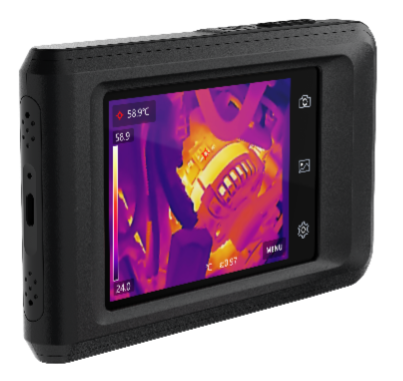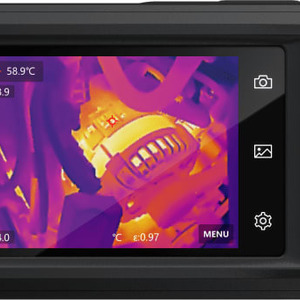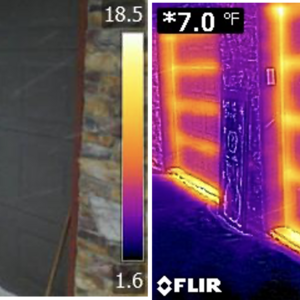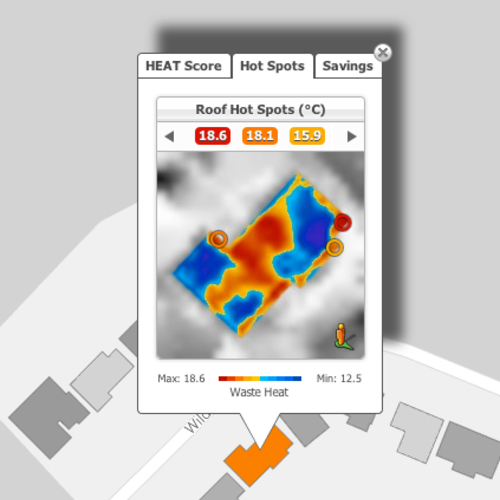
Thermal imaging is a wonderful tool that not too many years ago was rarely used because of the high cost and complexity of the equipment. That’s no longer the case. It’s still possible to spend tens of thousands of dollars on a high-end camera, but you can buy a decent unit for under $1000. I own a very good camera that I use all the time, and it retails for $600. This post will cover different cameras on the market, useful terminology around the topic, and basic information needed to effectively use a thermal imaging camera.
Types of cameras
There are a few different manufacturers that currently sell cameras designed for construction and building diagnostics. The most familiar is probably Flir, but others include Seek, Fluke, and Hikmicro. I currently own a couple Flir and a Hikmicro. My first camera was an Extech, manufactured by Flir; it didn’t have near the capabilities of my current cameras, and the cost of that first camera was more than twice that of newest.

There are three common types of cameras used by the construction trades. The first two are handheld and the third is an attachment for a smartphone. The more-common handheld is what most people associate with thermal imaging. The viewing screen is attached above a handle with a trigger that is used to take the photos. Newer models have touch screens to change the camera’s settings, and some have adjustable focus and interchangeable lenses. Prices for this style of handheld cameras range from a few hundred to nearly ten thousand dollars for a high-end, more advanced camera.
The second handheld camera (photo above) looks like a traditional digital camera and is about the size of a smartphone. Their size makes it easy to carry and store; mine fits nicely…
Weekly Newsletter
Get building science and energy efficiency advice, plus special offers, in your inbox.

This article is only available to GBA Prime Members
Sign up for a free trial and get instant access to this article as well as GBA’s complete library of premium articles and construction details.
Start Free TrialAlready a member? Log in















2 Comments
Randy,
This is a great overview. Looking forward to the next instalment.
I agree. Thank you
Ryan
Log in or become a member to post a comment.
Sign up Log in